Mughal Painting
Generally made as miniatures either as book illustrations or as single works, Mughal painting evolved from the Persian school of miniature painting with Hindu, Buddhist and Jain influences. These paintings evolved during the rule of various Mughal Emperors in India. The paintings often revolved around themes like battles, legendary stories, hunting scenes, wildlife, royal life, mythology, etc. These paintings also became an important medium to narrate the tall tales of the Mughal emperors. This art form became so popular that it eventually made its way to various other Indian courts as well. The Victoria and Albert Museum in London houses a large and impressive collection of Mughal paintings.
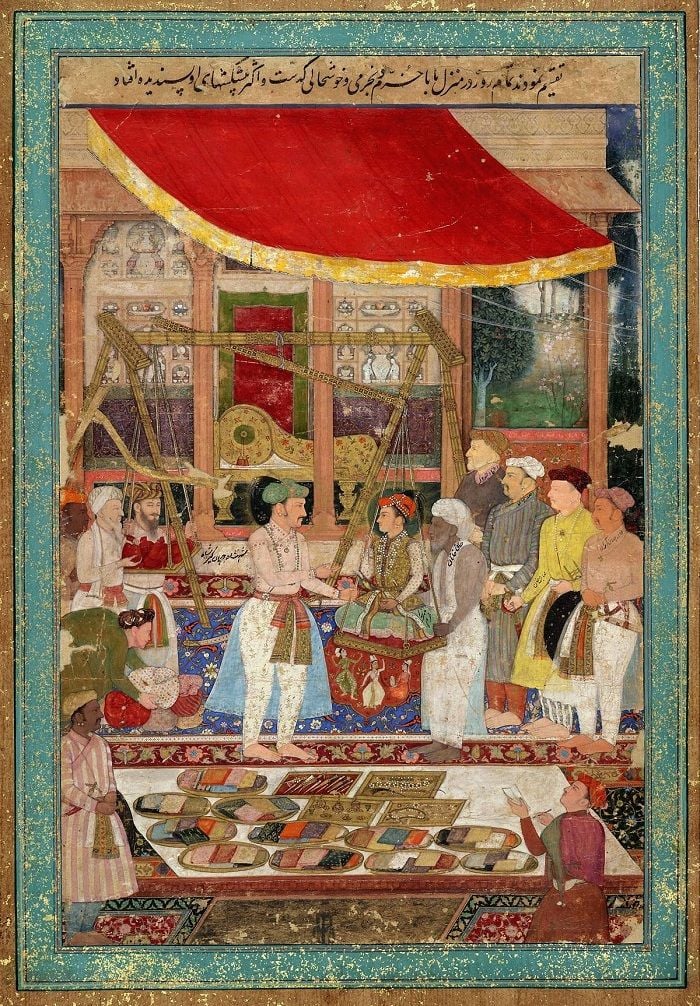
History & Origin
Before the rise of the Mughal Empire in India, the Delhi Sultanate ruled over most parts of the Indian subcontinent. Miniature painting was already evolving in various regions from around 10th century and it continued to flourish in various regional courts during the Delhi Sultanate. When Humayun, the second Mughal emperor, returned from his exile, he brought along with him two eminent Persian artists – Mir Sayyid Ali and Abd al-Samad. Based on Humayun’s instructions, these Persian artists created many famous paintings, including the ‘Khamsa of Nizami.’ These paintings deviated from the traditional style of Persian art and hence a new style of art form called ‘Mughal Painting’ was born. Mughal paintings were further developed by subsequent Mughal emperors.
Growth of the Mughal Painting Under Various Emperors
The Mughal painting soon became popular among rulers as they found the idea of portraying themselves interesting and royal in many ways. It was also a great artistic medium to display their bravery and achievements. After the death of Humayun, his son Akbar took up and expanded his father's library. He also showed great interest in arts and the Mughal painting flourished under his reign. The impetus it received during the reign of Akbar made the Mughal painting further more famous, and it was taken forward by Shah Jahan and Dara Sikoh. Let’s analyse the growth and development of Mughal painting during the reign of various Mughal emperors.
Akbar
Since Akbar had studied the nuances of arts and paintings under Abd as-Samad, he encouraged and supported art. Under his reign, the Mughal painting evolved and developed at a rapid pace. Akbar ordered the creation of many paintings and also paid close attention to the final output of all these artworks. He was very particular about the details and the artistic elements involved.
Akbar had an impressive number of painters in his court. Between 1560 and 1577, he commissioned a number of massive painting projects. One of the earliest painting projects commissioned by Akbar was 'Tutinama' which literally translates to 'Tales of a Parrot.’ 'Tutinama' is an episodic Persian story divided into 52 parts. Akbar commissioned 250 miniature paintings that narrated 'Tutinama' in an artistic manner. The responsibility of completing the project was given to two Iranian artists - Abdus Samad and Mir Sayyid Ali - and it took them almost five years to complete 'Tutinama.’ Today, 'Tutinama' is preserved at the Cleveland Museum of Art in Ohio.
The second major project commissioned by Akbar was ‘Hamzanama,’ which narrated the legend of Amir Hamza. Akbar had enjoyed these stories during his childhood, so he ordered the recreation of ‘Hamzanama’ and the project included 1400 Mughal paintings that were unusually large for miniatures. As many as 30 primary artists were used and they were supervised by Mir Sayyid Ali, who was later replaced by Abdus Samad.
Other famous paintings commissioned by Akbar include ‘Gulistan’, ‘Darab Nama’, ‘Khamsa of Nizami’, ‘Baharistan’, etc. ‘Gulistan’, which was Saadi Shirazi's masterpiece, was created at Fatehpur Sikri. From 1570 to 1585, Akbar hired more than a hundred painters who practiced Mughal paintings in his court.
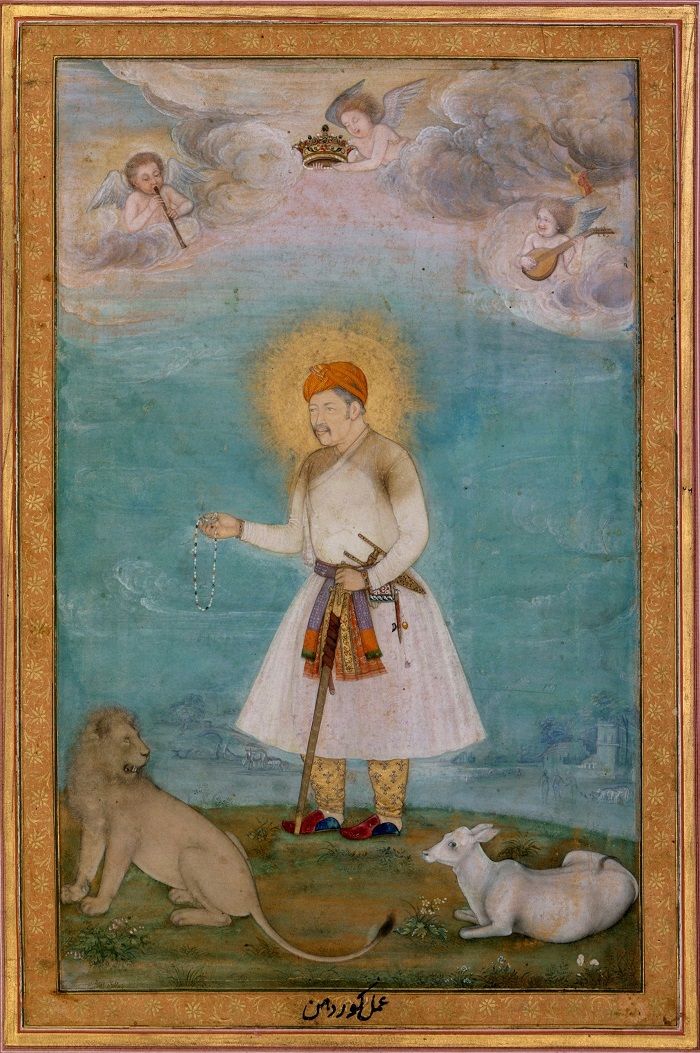
Jahangir
Much like his father, Jahangir too had an inclination toward arts, which proved beneficial for the growth of Mughal art. The Mughal painting continued to grow under his reign. Since Jahangir was largely influenced by European painting, he ordered his painters to follow the single point perspective used by European artists. This gave a whole new perspective to the Mughal painting. Jahangir even used European paintings that portrayed the images of Kings and Queens as references and asked his painters to take a leaf out of these paintings. As a result, most of the Mughal paintings commissioned by Jahangir had finer brush strokes and lighter colors. One of the major projects commissioned by him was the ‘Jahangirnama.’ It was an autobiography of Jahangir and it consisted of several paintings that included unusual themes, such as fights between spiders. Several individual portraits of Jahangir were also made by his painters. However, he also commissioned many paintings of birds, animals and flowers which were portrayed in a realistic manner. Overall, the Mughal painting continued to flourish and also continued to evolve under Jahangir’s rule.
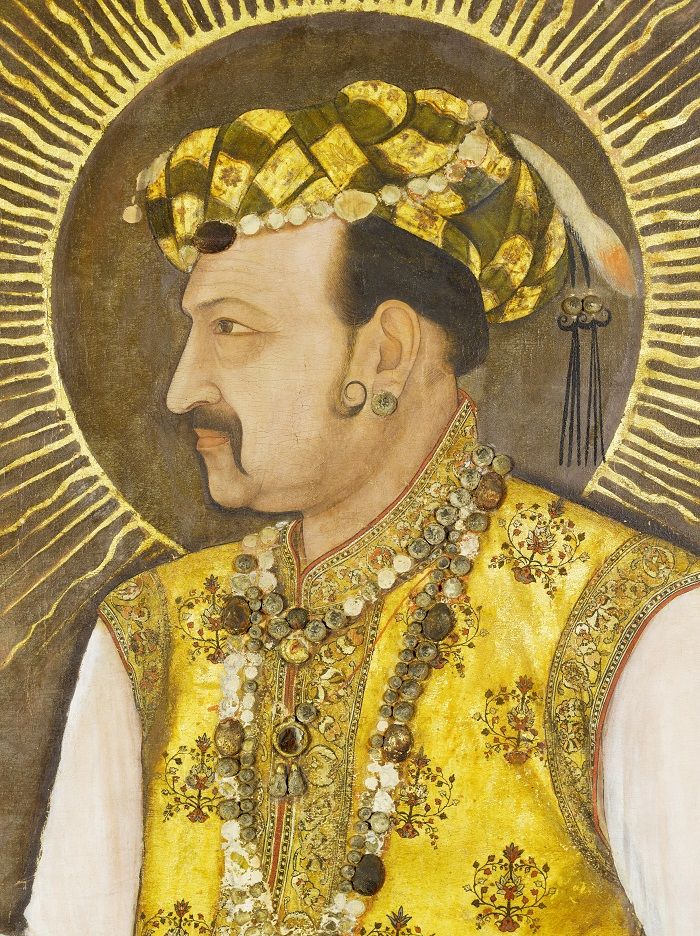
Shah Jahan
Though Mughal painting continued to expand during the reign of Shah Jahan, the paintings that were displayed in the court became increasingly rigid and formal. However, he commissioned a large number of paintings meant to be his personal collection. These paintings were based on themes like gardens and pictures that gave great aesthetic pleasure. He also ordered many works that portrayed lovers in intimate positions.
One of the most important works produced during his reign was the ‘Padshanama.’ This work was made to look lavish with generous volumes of gold plating. The ‘Padshanama,’ which narrated the achievements of the King, contained several paintings of the courtiers and servants as well. The work was so elaborate that even servants were painted with amazing details that provided a great individuality to each and every character. While the servants and courtiers were portrayed using the frontal view technique, the king and other important dignitaries were portrayed by adhering to the rules of strict metamodeling.
During the reign of Shah Jahann, the aesthetics of Mughal painting were retained which contributed to the growth and development of Mughal paintings. Many of the paintings produced under the leadership of Shah Jahan are now housed at various museums around the world.
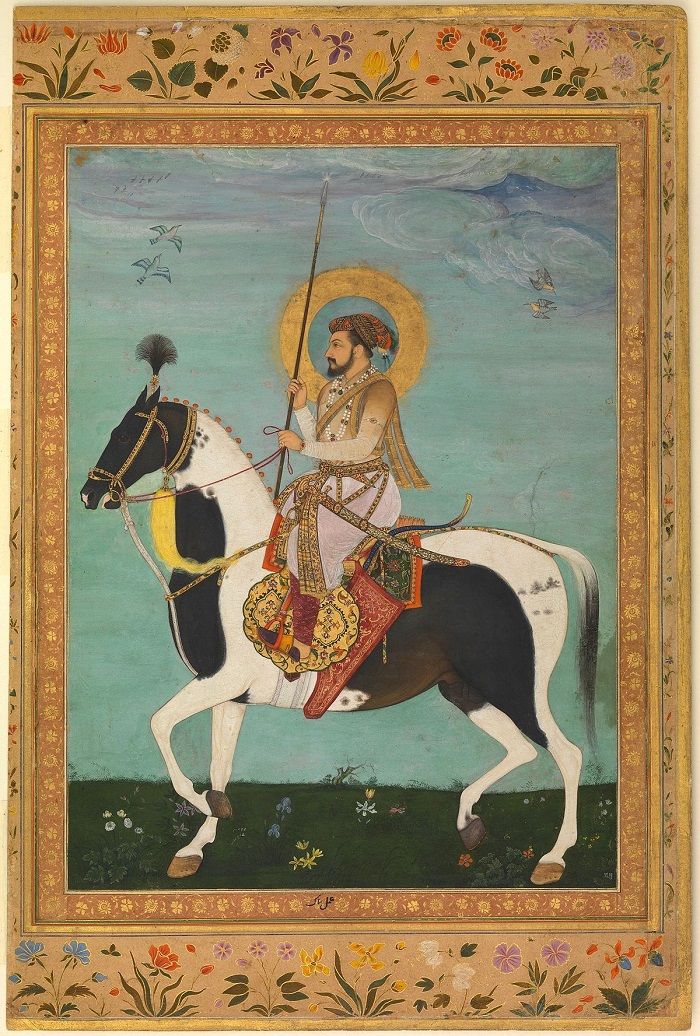
Aurangzeb
Though Aurangzeb did not support or encourage any form of art, including painting, the Mughal painting had already gained support among the commoners and had also gathered a number of patrons. However, some of the best Mughal paintings were created under Aurangzeb’s reign. While Aurangzeb did not order these paintings, it is said that seasoned painters created a few paintings on their own in the workshops that were maintained by earlier Mughal emperors. When painters were certain that Aurangzeb would order the closure of these workshops sooner or later, they decided to create some of their best works, which resulted in some exquisite paintings.
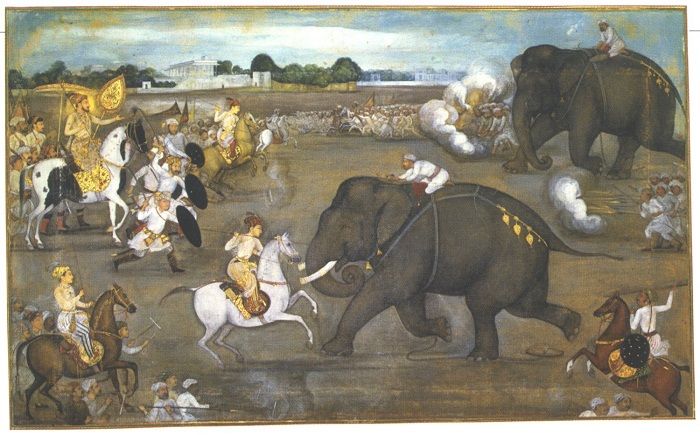
Muhammad Shah
During the reign of Muhammad Shah, Mughal painting received a brief revival as he was a patron of arts. He encouraged and supported paintings, and two of the best artists - Nidha Mal and Chitarman - of the time served in his court. Their paintings often depicted scenes of the royal court, celebrations, festivals, hunting experiences of the king and adventurous games like hawking.
Unfortunately, the Mughal painting declined after the death of Muhammad Shah. When the Mughal Empire was in decadence, various other schools of painting with Mughal influence emerged in several regional courts, including the Rajput and Pahari paintings.
With the advent of the British East India Company, almost all forms of Indian painting came under the influence of Western painting.
The Mughal painting, however, had left an indelible mark and spread to several local courts. In fact, many Hindu paintings that depicted Ramayana and Mahabharata had influences of Mughal painting as many of these Hindu paintings were created when the Mughal school of painting was at its peak.
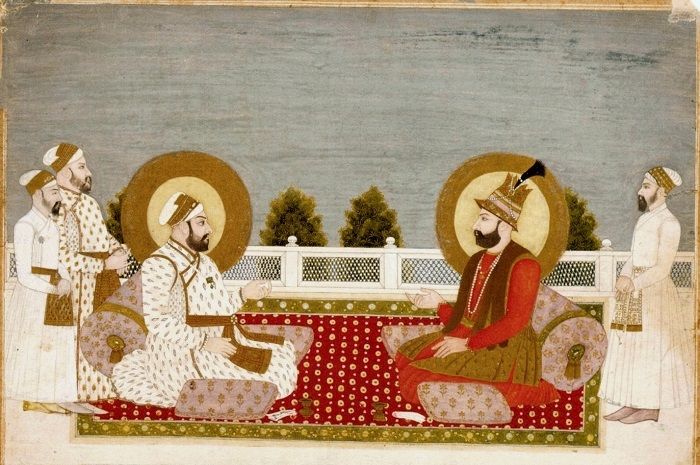
Prominent Painters During the Mughal Period
Every painting project involved many artists and each one had a specific role to play. While a few of them worked on the composition, the next set of artists would take care of the actual painting, and the last set of artists would concentrate on the minute details of the art.
Initially, Persian painters, such as Mir Sayyid Ali and Abd al-Samad played a key role in the growth and development of Mughal paintings in India. Later on, during the 16th and 17th centuries, painters like Daswanth, Basawan, Miskin and Lal worked in the Mughal court and kept the art alive.
During Akbar's reign, an artist named Kesu Das started implementing European techniques in Mughal paintings. A renowned painter named Govardhan worked under three major Mughal emperors - Akbar, Jahangir and Shah Jahan. Other prominent artists of the Mughal period were Kamal, Mushfiq and Fazl. Many other artists, including Bhawanidas and Dalchand, started working at Rajput courts when the Mughal Empire began to decline.



